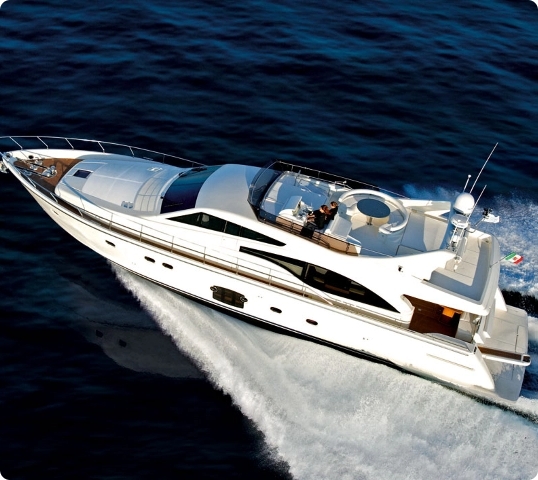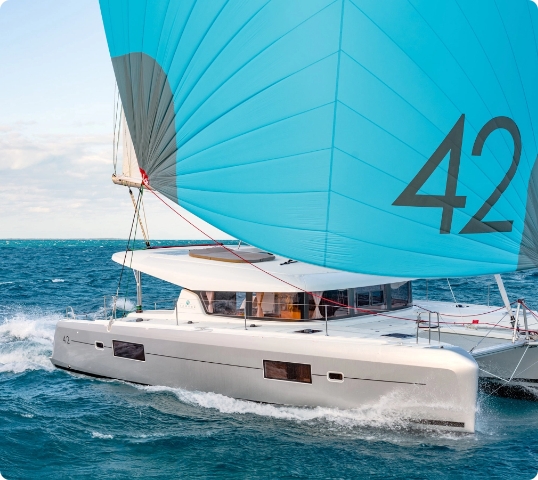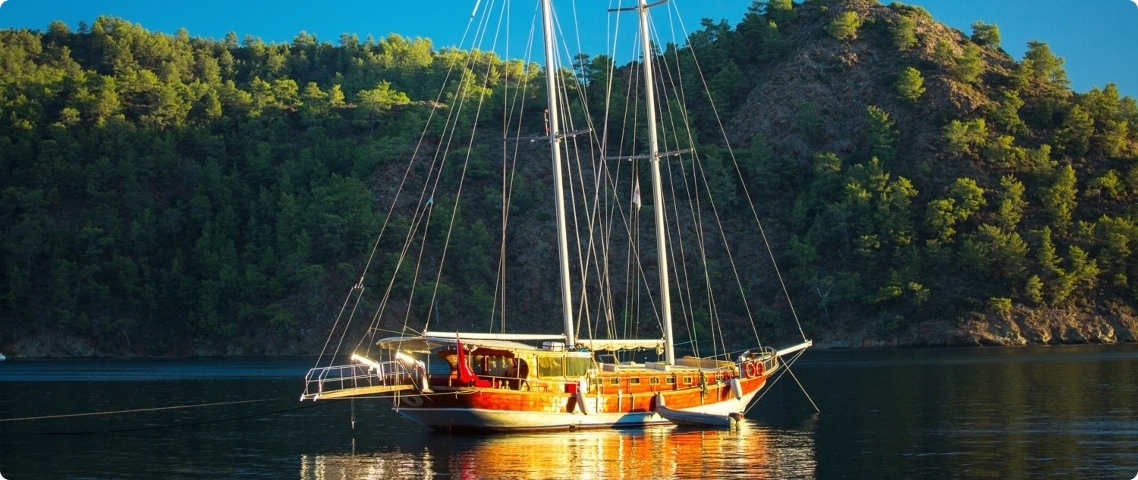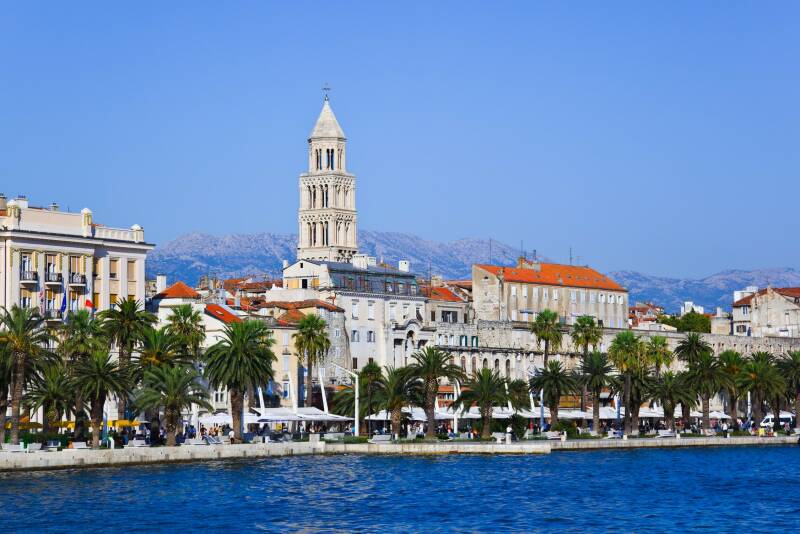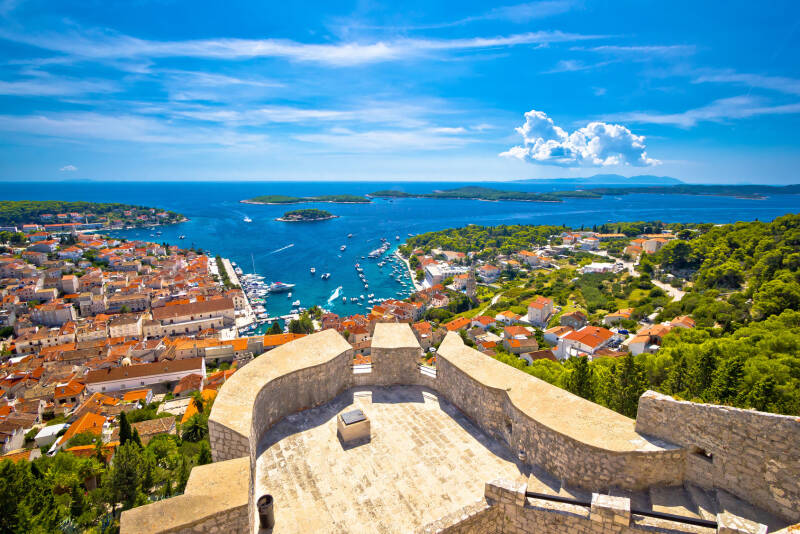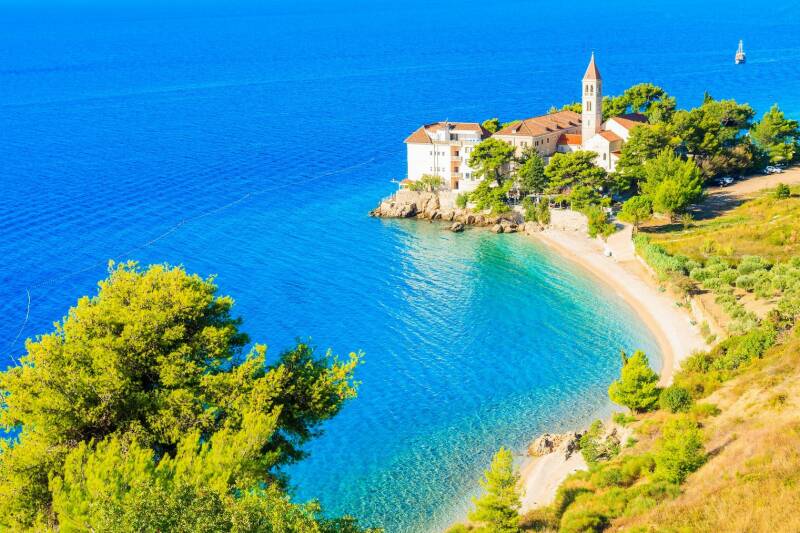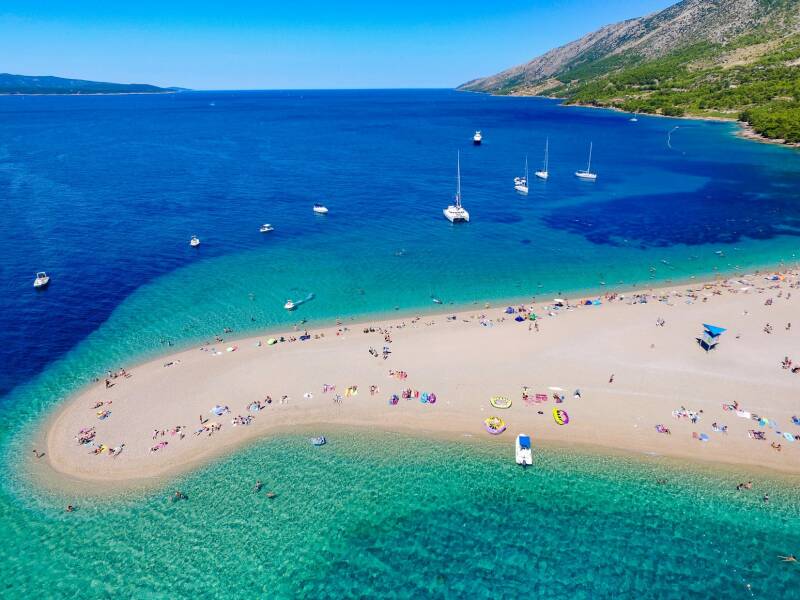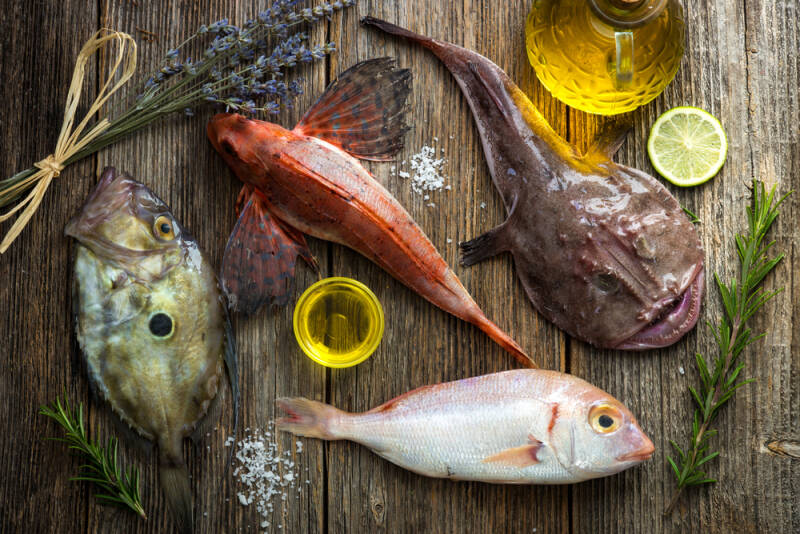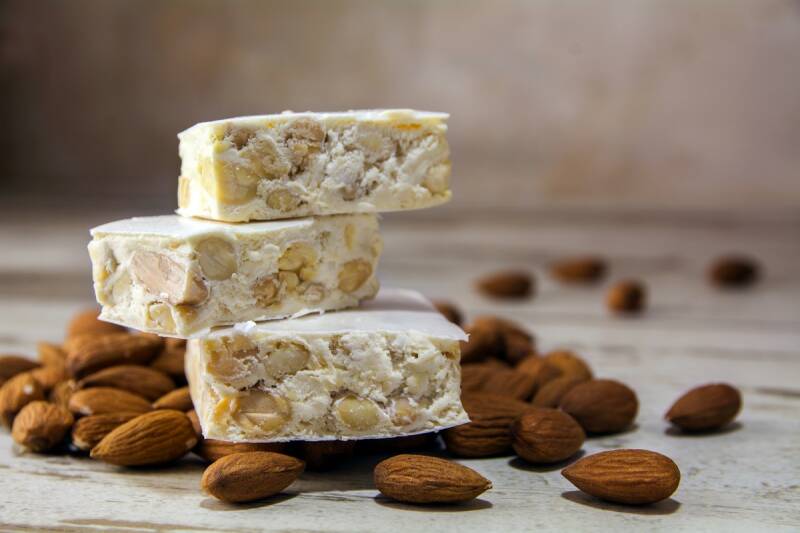Split is the second biggest city in Croatia and the most important city on the Croatian coast, as well as the perfect starting point for a yacht charter in Croatia with a wide range of boat rental options available. Its location is ideal for every type of vacation since it is situated between mountains and beaches. Here you can find a beautiful UNESCO World Heritage Site - Diocletian’s Palace, a small city within a city that breathes with rich history. The city of Split has embraced its cultural heritage but is also developing in a modern way. You will find different architectural styles fused with lush greenery when exploring top attractions of this gorgeous Dalmatian city on your yacht charter vacation.
In the vicinity of Split, you can see some of the most beautiful Croatian islands such as Hvar. Whether you choose to sunbathe and swim in crystal-clear sea, have plenty of fun attending different festivals, or enjoy the peace and quiet in the unspoiled nature, yacht charter Split is always a good idea!
Find Your Ideal Yacht in Split Sailing Region
Why is Split Popular Among Sailors?
Yacht charter in Split region owes its popularity to the fact that it has the largest offer of charter yachts and boat rentals in Croatia, but also outside of the country borders. An indented coastline with a large number of some of the most beautiful islands will excite all types of sailors.
Best time to sail in Split area is from April to October. Yachtsmen will enjoy perfect Mediterranean climate, which means it is mostly warm and dry. They will appreciate moderate maestral wind that creates favourable sailing conditions. The sea is clean and clear, deep enough for all types of vessels, and ideal for swimming and diving. Cities and villages on both mainland and islands are a short distance away, making sailing in Split area on your yacht charter comfortable.
Yacht Charter in Split Sailing Region
Due to its geographical position, yacht charter in Split gives you plenty of freedom to plan unique sailing routes and itineraries. Whether you're keen on renting a boat in Split and exploring centuries-old coastline towns like Šibenik and Trogir or you're more interested in adventurous island hopping with a skippered yacht charter, Split is a great starting point for your yacht charter holiday in Croatia.
Sailing in the Split area is simple, which makes it ideal for beginners. However, during high season it can be very crowded in marinas and ports so you should book a berth for your Split yacht charter in advance. The yacht charter season in Split area kicks off in April and finishes in October, which also signifies the start of the regatta season.
Best Places to Visit in Split Region
Although Split will enchant you and make you want to stay a few days extra after chartering a yacht, we strongly recommend you visit some of the most beautiful islands and cities during your yacht charter in Split like Trogir, a small, beautiful town north of Split with its old core protected by UNESCO as a World Heritage Site. Trogir is connected with the island of Čiovo by a short bridge.
Maslinica is a calm place on the island of Šolta perfect for a relaxed holiday. You can moor in the luxury marina and visit the Marchi castle.
Bol is a town with a famous beach (Zlatni rat) on the island of Brač. The town itself is a known hiking and cycling destination with beautiful trails along the island. Zlatni rat beach extends about half a kilometre into the clear blue sea and changes its shape according to the waves and wind.
Hvar Island offers a unique combination of beautiful beaches, historic architecture, and vibrant nightlife. The Pakleni Islands are a group of around 20 mainly uninhabited islands opposite the town of Hvar with a lot of beautiful beaches and bays. Šćedro is a tranquil island with just four permanent residents. On Šćedro, you can find seafront restaurants that offer buoys where you can moor your boat.
Komiža and Vis Island are known for excellent, traditionally prepared seafood. Kamenica beach is perfect for swimming and tanning during the day and for partying during the night, while Modra Špilja (Blue Cave) offers spectacular game of hues of blue.
Important Info for Sailing in Split Sailing Region

Best time to sail
April - October

Most popular marinas
ACI Marina Split, ACI Marina Trogir, Marina Agana, Marina Baotić, ACI Marina Palmižana, Marina Kaštela

Nearest airports
Split Airport (SPU)

Number of charter yachts
1000+

Popular regattas
Vis Regatta, Mrduja Regatta, Easter Regatta

Top attractions
Diocletian’s Palace, Marjan Hill, Hvar Island, Zlatni Rat Beach on Brač Island
Gastronomy Highlights of Split Region
Croatian cuisine consists of different ingredients, depending on the region. Split or Central Dalmatian region specializes in fish, seafood, pasta, meat, olive oil and wine. When sailing on you yacht charter in Split area, you will get a chance to explore many towns and islands and eat in countless restaurants that serve gastronomic delights. After exploring some of the top attractions in Split sailing region, we recommend trying some of Dalmatian cuisine classics:
Dalmatinska pašticada is made with beef that has been marinated in vinegar and spices for a few days or more. Next, the beef is cooked in red wine or prosecco with bacon, tomatoes, a few dried figs or prunes, and root vegetables. The meal is typically served with a side of handmade pasta or gnocchi.
Brudet is a seafood stew popular in the Croatian regions of Dalmatia, Kvarner and Istria. It is normally prepared of several types of fish stewed with spices, vegetables and red or white wine, or even vinegar to keep the flesh of the fish whole.
Crni rižot is a distinctive black risotto cooked with fresh cuttlefish or squid. The risotto's intimidatingly dark hue is derived from cuttlefish ink, and it is frequently flavoured with mussels, clams, and other shellfish.
Mandulat is a traditional Dalmatian dessert similar to Turkish halva and Italian torrone. With honey and almonds as its main ingredients, this no-bake cake is wonderfully sweet and calorie-dense. It can be eaten as a dessert or as a nutritious snack.






